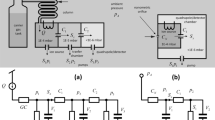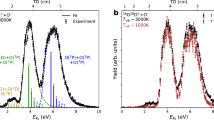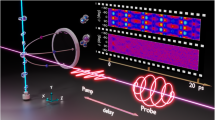Abstract
THE influonce of its neighbours on the rotation and vibration states of a molecule in a gas is due partly to the general intermolecular field and partly to actual collisions. From the kinetic theory of gases, it is known that the mean frequency of collisions which a molecule undergoes is given by the ratio P/η of the pressure to the viscosity of the gas. The perturbing influence of collisions on molecular rotation may be expectod to be small so long as this frequency is low, but would become considerable when the mean frequency of collision approaches a value comparable to that of molecular rotation. By taking P/η to be equal to the frequency of rotation of the molecule in the one-quantum state, we may obtain an estimate of the pressure at which the distinctness of quantisation of the different rotations would disappear. In this way, the following estimates of pressure in atmospheres at 30° C. are obtained for the different gases: Hydrogen, 450 ; methane, 48 ; nitrogen, 29 ; oxygen, 25 ; acetylene, 10 ; carbon dioxide, 5 ; hydrogen chloride, 128; ammonia, 83; nitric oxide, 25.
This is a preview of subscription content, access via your institution
Access options
Subscribe to this journal
Receive 51 print issues and online access
$199.00 per year
only $3.90 per issue
Buy this article
- Purchase on SpringerLink
- Instant access to full article PDF
Prices may be subject to local taxes which are calculated during checkout
Similar content being viewed by others
References
Proc. Nat. Acad., vol. 17, p. 229; 1931.
Author information
Authors and Affiliations
Rights and permissions
About this article
Cite this article
BHAGAVANTAM, S. Effect of Pressure on Raman Spectra. Nature 128, 188 (1931). https://doi.org/10.1038/128188b0
Issue date:
DOI: https://doi.org/10.1038/128188b0



